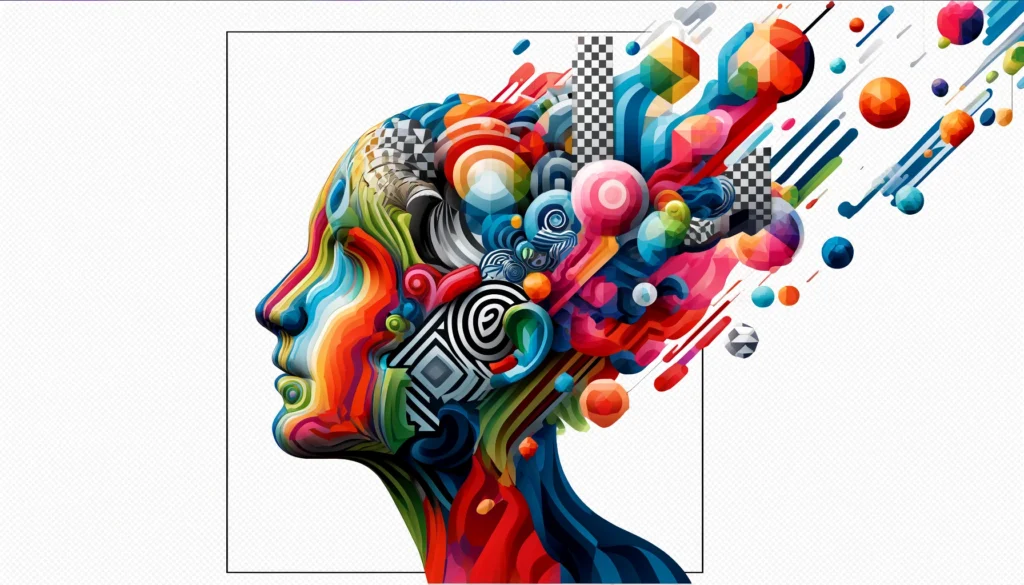
Revolutionize Image Generation: Enhancing Diffusion Models with Self-Attention Guidance
Diffusion models have revolutionized image generation by progressively denoising a noisy input. These models, known for producing high-quality images, face challenges like artifacts and fidelity issues. Self-Attention Guidance (SAG) offers an innovative solution to enhance these models, ensuring superior output quality.
Overview of Diffusion Models
Diffusion models transform random noise into coherent images through iterative denoising. This approach excels in high-quality image generation but struggles with maintaining fidelity and avoiding artifacts.
Denoising Diffusion Probabilistic Models (DDPM)
Definition and Process
DDPMs apply a forward Markovian process, adding and then removing noise to gradually reveal a clear image. This iterative process is key to their success in generating detailed images.
Applications
DDPMs are used in various image generation tasks, forming the backbone of many modern generative models. Applications range from art and entertainment to scientific visualization and medical imaging, where high-quality, realistic images are crucial.
Traditional Guidance Methods
Classifier Guidance
Classifier guidance steers the diffusion process using an additional classifier, enhancing output but increasing computational complexity and requiring labeled data. A pretrained classifier directs the generation towards desired outcomes, demanding significant resources.
Classifier-Free Guidance
This method reduces complexity by using internal model features instead of an additional classifier. It leverages the internal structures of the diffusion model to guide the generation process, simplifying the system but still needing specific conditions.
Self-Attention in Diffusion Models
Role of Self-Attention
Self-attention mechanisms capture essential features within data, guiding the model to focus on relevant regions during image generation. This enhances both model interpretability and performance.
Advantages
Leveraging intrinsic attention maps, self-attention improves the model’s ability to generate high-quality images. It enhances detail and coherence, making the model more robust against input variations.
Self-Attention Guidance (SAG)
Concept
SAG enhances image quality by using self-attention maps to emphasize important regions. It adversarially blurs these areas, refining the guidance process and improving the final output.
Implementation
SAG integrates seamlessly with existing diffusion models, requiring no additional training or external data. It can be applied to any pre-trained diffusion model, leveraging existing attention mechanisms to improve output quality without additional computational overhead.
Blur Guidance
Mechanism
Blur guidance applies Gaussian blur to intermediate samples, smoothing fine-scale details and guiding the model towards clearer images. This method strategically blurs parts of the image the model deems important, forcing it to refine its attention.
Impact on Quality
This technique balances fine-scale details with overall structure, leading to higher-quality image generation. By smoothing minor imperfections and focusing on broader structures, blur guidance produces more realistic and aesthetically pleasing images.
Methodology of SAG
Preprocessing
SAG uses existing diffusion models and extracts self-attention maps without requiring retraining. This preprocessing step involves analyzing the model’s attention mechanisms to identify areas of focus.
Guidance Process
By adversarially blurring attention areas at each iteration, SAG refines the generation process, ensuring better quality images. The iterative blurring helps in gradually improving the model’s focus, leading to significant enhancements in output quality.
Integration
SAG can be combined with other guidance methods, such as classifier and classifier-free guidance, to achieve even better results. This integration allows for a more comprehensive guidance system, leveraging multiple techniques to maximize image quality.
Experimental Results
Performance Metrics
Tests on various models, including ADM, IDDPM, and Stable Diffusion, show that SAG significantly improves image quality. The performance metrics indicate substantial improvements in clarity, detail, and overall aesthetic quality.
Comparison with Unguided Models
SAG outperforms unguided models, demonstrating superior capabilities in generating high-quality images. In direct comparisons, SAG-guided models consistently produce images that are more detailed and visually appealing.
Applications and Use Cases
Image Synthesis
SAG is particularly useful in fields requiring high-quality image generation, such as art, entertainment, and media. It enables artists and designers to create more realistic and detailed images, enhancing creative projects and media content.
Medical Imaging
In medical imaging, SAG enhances the clarity of generated images, aiding in better diagnosis and research. High-quality images are crucial for accurate diagnosis and treatment planning, making SAG an invaluable tool in the medical field.
Scientific Visualization
SAG can also be applied in scientific visualization, where clear and detailed images are necessary to represent complex data accurately. This application helps in better understanding and interpreting scientific phenomena.
Advantages of SAG
No Additional Training Required
SAG can be applied to pre-trained models, saving time and computational resources. This advantage makes it a cost-effective solution for enhancing image generation without extensive retraining.
Condition-Free
Unlike traditional methods, SAG does not rely on external conditions or labels, making it more versatile. This flexibility allows it to be used in a wide range of applications without specific conditions or labeled datasets.
Limitations and Challenges
Computational Complexity
While it reduces the need for additional training, the adversarial blurring process can be computationally demanding. The iterative nature of the process requires significant computational power, which can be a limitation in resource-constrained environments.
Dependency on Model Architecture
The effectiveness of SAG can vary based on the underlying architecture of the diffusion model. Some models may not benefit as much from SAG, depending on their internal structures and attention mechanisms.
Future Directions
Optimization Techniques
Research into optimizing the computational efficiency of SAG could make it more accessible for broader applications. Developing more efficient algorithms and leveraging advanced hardware can help reduce the computational demands of SAG.
Integration with New Models
Exploring SAG integration with emerging generative models could further enhance their capabilities. As new models are developed, integrating SAG can help push the boundaries of what is possible in image generation.
Conclusion
Self-Attention Guidance significantly improves the quality of images generated by diffusion models. By leveraging self-attention maps, it provides a condition-free, efficient method to guide the image generation process. Ongoing research and development could unlock further potential, making high-quality image generation more accessible and effective across various domains. SAG represents a significant step forward in generative models, offering new possibilities for high-quality image synthesis.
For more detailed information, you can refer to the original paper and the code implementation on GitHub.